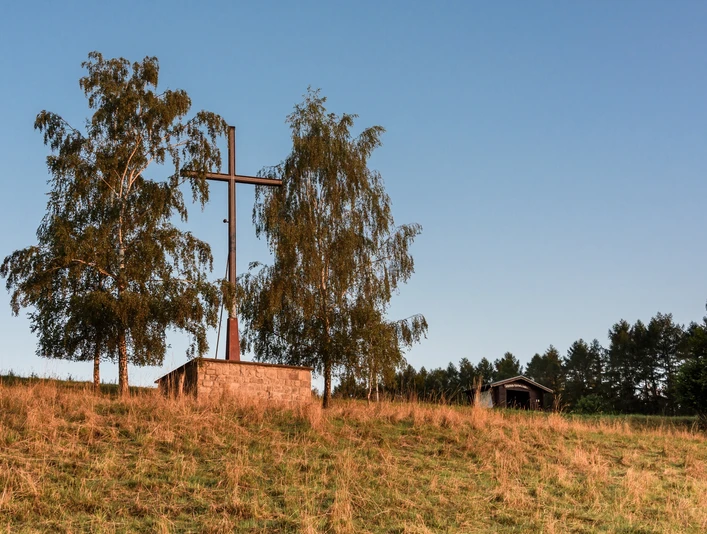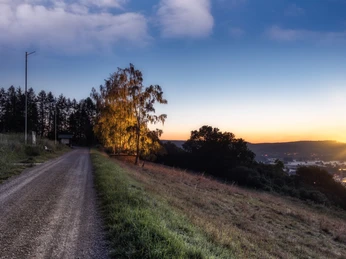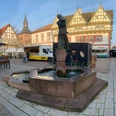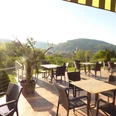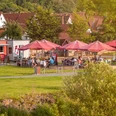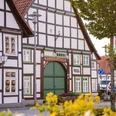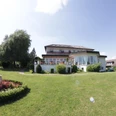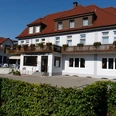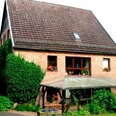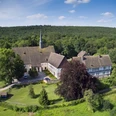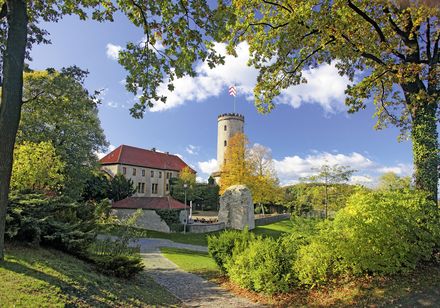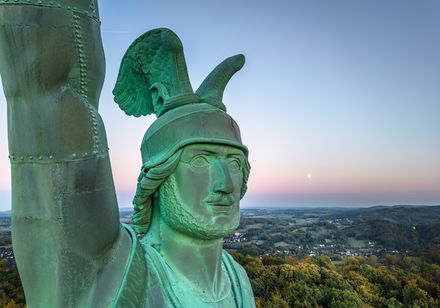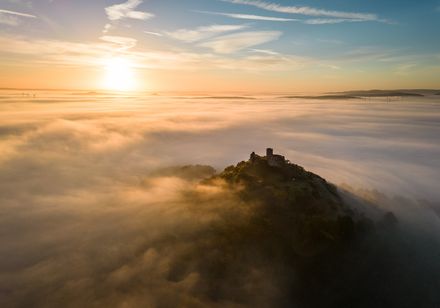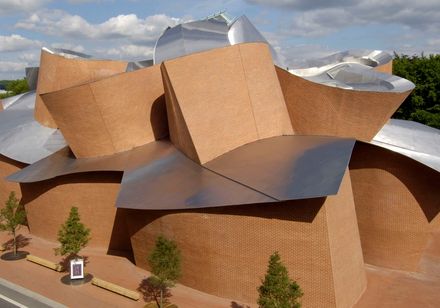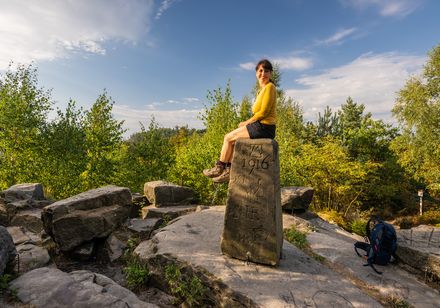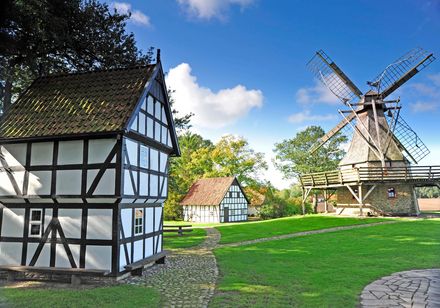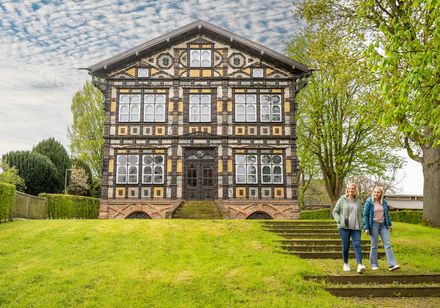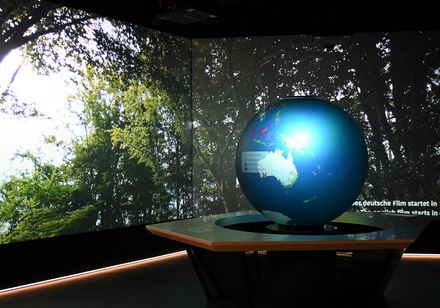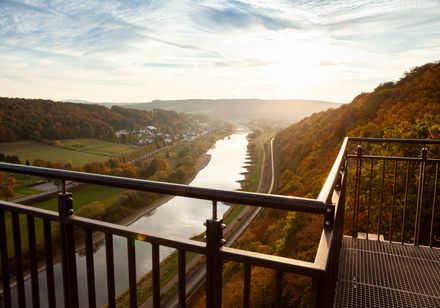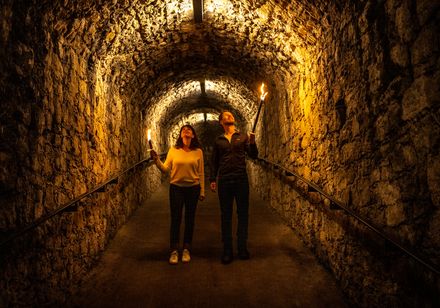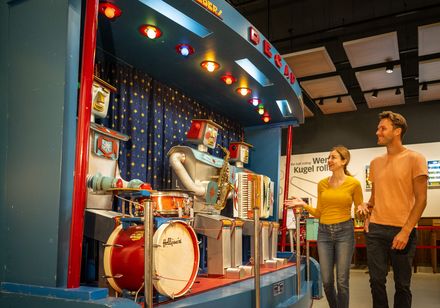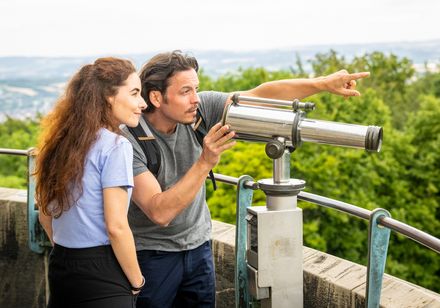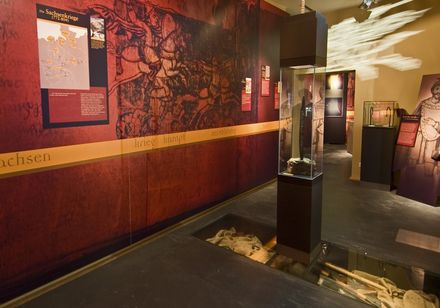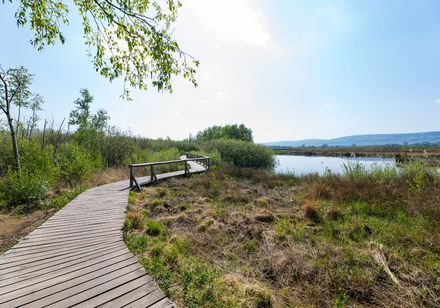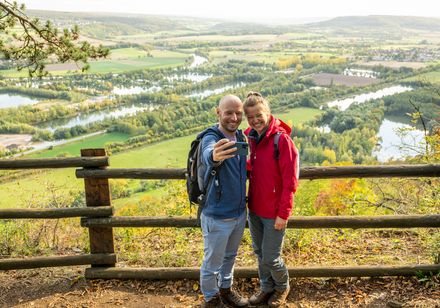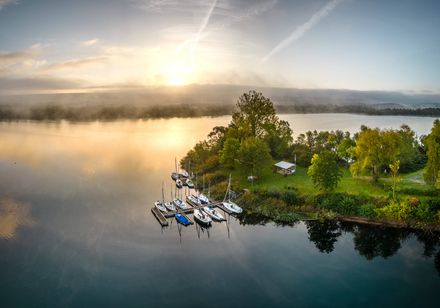However, the population and the Dechenbrüder could not and would not accept this new implementation of their Christian-oriented wheel race. Initially, they tried to boycott the wheel race by claiming high damages from the property owners, but this was unsuccessful. Therefore, on July 25, 1935, Lügden citizens erected a 10-metre-high cross on a stone base directly at the point where the Easter wheels ran. Two worldviews - Christianity and neo-paganism - now intersected here.
As the cross was erected on private property, the other side was unable to have it demolished or removed.
Who were the initiators of what was certainly a very daring project at the time? Almost all of the men in this group belonged to the Center Party, which was already banned at the time. August Rüsenberg, a bricklayer's foreman from Kanalstraße, had the idea and soon found approval from his friends and acquaintances, despite the dangers of the undertaking. The cross was carpentered in Sagel's barn in Kanalstraße by cartwright Johannes Blome from Bahnhofstraße, joiner Johannes Gärtner and other helpers.
After the quarry stone base was completed and the cross painted by master painter Otto Krüger, farmer Hermann Blome, who also owned the land, took over the transport to Osterberg on July 25, 1935. The group worked so secretly that it was hardly known in the town. So it was all the more surprising to suddenly see this 10-metre-high cross on the Osterberg. Of course, the Nazis didn't miss it either and denounced these "traitors" in the notice board at the town hall. The cross had to be tolerated by the party as an "opposition cross" during the next few years, but it was covered with swastika flags.
In 1958, the Dechenverein acquired the cross plot and took over the cross and its maintenance. In 1970, the now dilapidated cross was replaced by a new one made from an old larch tree. Due to an agricultural accident, this cross had to be replaced in 1998. Every year, from Palm Sunday to White Sunday, it shines brightly into the Emmertal valley to give notice of the great Easter event on the first Easter Sunday, but also as a witness to the courageous resistance of some Lügden citizens. During the war, four wheels ran until 1944, but early in the evening, still in daylight, as it was not possible to do so at a later time due to the blackout order. In 1945, at the end of the war, no wheels had been running for many, many years. But as early as 1946, courageous men - some of the Dechen brothers were still in captivity - took up the old tradition. Just like the living conditions at the time, the events improved from year to year in terms of organization and also in the way they were run.
Good to know
Openings
Eligibility
for Groups
for Class
for families
for individual guests
Pet allowed
Suitable for the Elderly
for Children of all Ages
Directions & Parking facilities
Contact person
Osterdechenverein Lügde e.V.
License (master data)
Nearby
